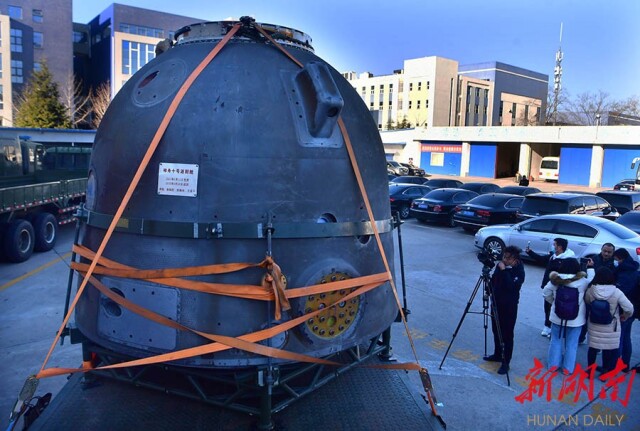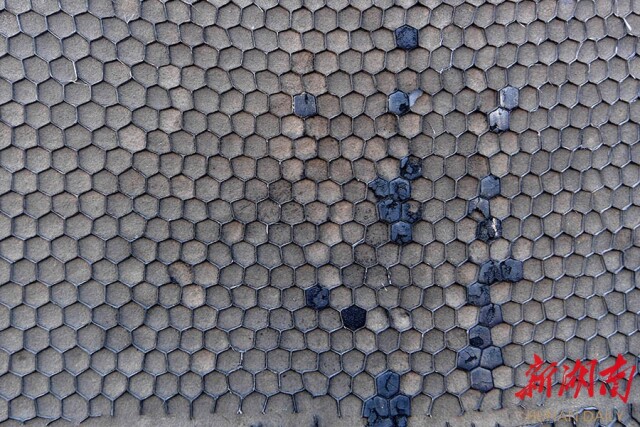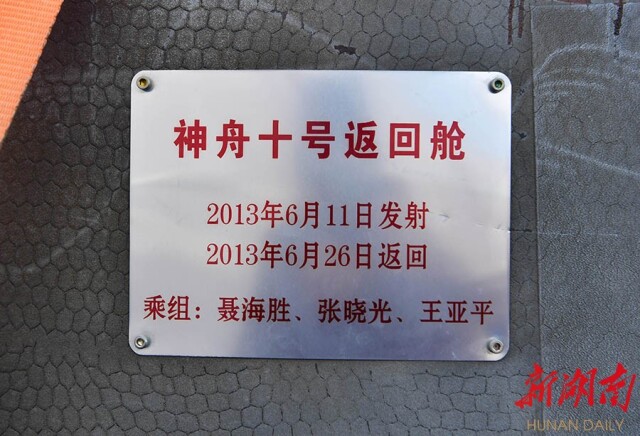
[ad_1]
Original title: Shenzhou 10 return capsule will be loaned to Hunan for a long time and displayed at the Comrade Mao Zedong Memorial Hall in Shaoshan.

At 10:19 am on December 20, the return capsule of the manned spacecraft Shenzhou 10 arrived at the Comrade Mao Zedong Memorial Hall in Shaoshan, Hunan. The reporter learned from the China Manned Space Engineering Bureau that the return capsule of the Shenzhou 10 manned spacecraft will be loaned to Hunan for a long time and will be displayed at the Comrade Mao Zedong Memorial Hall in Shaoshan.
The return capsule of the Shenzhou 10 manned spacecraft (known as the “Shenzhou 10” return capsule) left Beijing two days ago. On the morning of December 18, the reporter witnessed the departure of the return capsule “Shen 10” at the Fifth Academy of the China Aerospace Science and Technology Corporation.

In the flatbed transport vehicle responsible for transportation, the return cabin is placed on a steel base frame and the sides are firmly secured with straps. The return cabin is about 2.6 meters long, 2.4 meters in diameter and weighs more than 2 tons.

The return cabin looked gray-black with traces of burns from high temperatures. Looking closer, you can see that the outer shell is a dense honeycomb structure. When the return capsule returns to earth, it will produce a violent friction with the atmosphere. At this time, the heat resistant structure of the return capsule must withstand the severe test of thousands of degrees Celsius. “It uses one of the most advanced heat-resistant materials in China,” Yu Songgeng, quality supervisor of the Fifth Academy of China Aerospace Science and Technology Corporation, introduced to reporters.

On June 11, 2013, astronauts Nie Haisheng, Zhang Xiaoguang, and Wang Yaping were launched on the manned Shenzhou 10 spacecraft by the Long March 2 F carrier rocket.
After the manned Shenzhou 10 spacecraft entered orbit, it conducted an automatic rendezvous and docking with Tiangong-1 on June 13. On June 25, the manned Shenzhou-10 spacecraft evacuated Tiangong-1 automatically. Subsequently, technical tests such as spacecraft orbit were carried out, and China’s first spacecraft orbit encounter test was successful. On June 26, the return capsule of the Shenzhou 10 manned spacecraft successfully landed in the planned area of the main landing site in central Inner Mongolia. The completion of the meeting and docking of Tiangong-1 and Shenzhou-10 means that the first phase of China’s manned spaceflight second-step mission will be the perfect ending, and will fully enter the space laboratory development stage and the space station.

According to Yu Songgeng, the Shenzhou spacecraft has 3 cabins, namely the propulsion cabin, the return cabin, and the orbital cabin. Only the return cabin can return to the ground. When the spacecraft launched and returned, the astronauts were in the return capsule.
The small round window on the side of the return capsule is a porthole through which astronauts can observe the universe and take pictures of space. At the top there is a hatch through which astronauts enter and exit. At the top of the return cabin, there are two larger circular openings, which is the parachute cabin, upon landing the parachute will pop out and open from the parachute cabin.

Before departure, the return cabin was fixed on the basis of waterproof cloth and protective net to ensure smooth and safe transportation to Shaoshan.

At noon on December 18, the transport vehicle carrying the “Shen-10” return capsule slowly left the China Fifth Academy Aerospace Science and Technology Corporation and departed for Shaoshan, Hunan.
The “Shen 10” return capsule, which carries the spirit of China’s manned spaceflight, will soon be on display at the Comrade Mao Zedong Memorial Hall in Shaoshan.

“The Shaoshan Comrade Mao Zedong Memorial Hall, as a first-class national museum, can meet the temperature and humidity requirements of the return cabin,” said Yang Guoli, director of Shaoshan Comrade Mao Zedong Memorial Hall. The Commemorative Theme Museum in Shaoshan has an annual visit volume of 5 million, and the Shaoshan Scenic Area receives 20 million visitors a year, ranking highest among similar monuments. Among them, the average annual number of primary and secondary students visit more than 45% of the annual visitors.

Yang Guoli said that from the audience’s perspective, placing the return capsule in the Comrade Mao Zedong Memorial Hall in Shaoshan has a wide audience and great value and effect. It can deeply integrate the space spirit and the red culture of the great man’s hometown, so that “nine days can capture the moon” The achievements and passion of great people are mutually contrasting, achieving the effect of “red culture “and” aerospace achievements “that complement each other. This is also a specific action commissioned by Secretary General Jin Ping to “make good use of red resources, carry forward the red tradition and continue with the red gene” Yin Yin, leading to full play of patriotism and education. from the revolutionary tradition of the monument and to better promote Shaoshan High-quality development of red tourism.
Source: Cao Xian Photography Guo Liliang / Hunan Daily · New client from Hunan